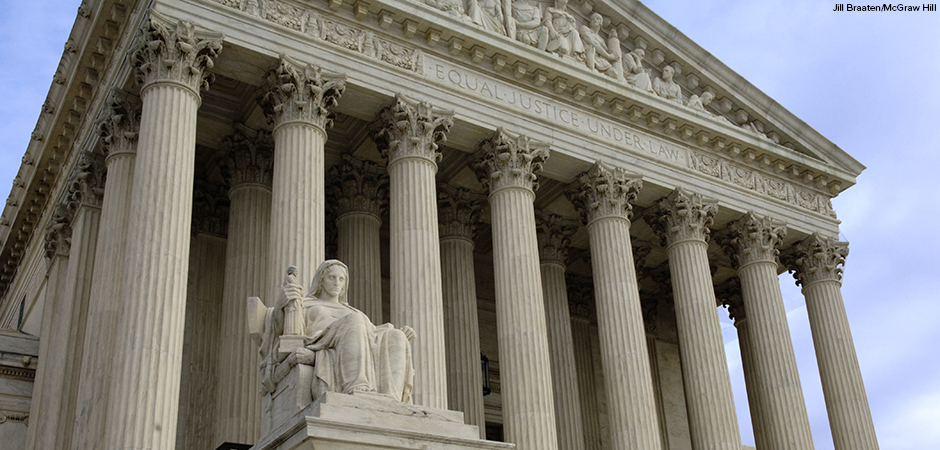
Sandra Day O’Connor, who made history as the first woman to serve as a U.S. Supreme Court justice, died on December 1, 2023. She was 93 years old.
O’Connor’s Professional Beginnings

Before she became a Supreme Court justice, Sandra Day grew up on a 250-square-mile cattle ranch on the border of Arizona and New Mexico. At 16, Day applied and was accepted into Stanford University in California. She completed two degrees at Stanford in only six years. She earned a bachelor’s degree in economics in 1950. Sandra Day graduated third in her class with her law degree in 1952. She married classmate John O’Connor after graduation.
As a woman in 1952, O’Connor had difficulty finding a job as an attorney despite her academic achievements. One law firm in California offered her a position, but only as a legal secretary. She finally asked the county of San Mateo, California, if she could work for free as a deputy county attorney. They agreed and eventually began paying her.
In 1954, when her husband was sent to Germany for his job, she accompanied him and worked as a civil attorney for the U.S. Army. She opened a law office in Phoenix, Arizona, when they returned to the United States in 1957. Over the next six years, O’Connor had three sons and stopped working at the law office to care for them.
Political Life
While caring for her family, O’Connor became active in local and state politics. This included working on U.S. Senate Republican Barry Goldwater’s 1958 campaign. O’Connor returned to full-time employment as an assistant Arizona attorney general, but she also remained active in Republican Party politics.
In 1969, Arizona Governor Jack Williams appointed O’Connor to a vacant seat in the Arizona state Senate. She was elected to the seat in 1970 and 1972. In 1972, her colleagues chose her as the Republican majority leader in the Arizona state Senate. O’Connor became the first woman in the United States to hold the position of majority leader in a state Senate.
As a legislator, O’Connor helped repeal a 1913 Arizona law that prevented women from working more than eight hours in a day. Companies used the statue as a reason not to hire women, and it blocked women from many occupations. O’Connor also backed laws giving women equal responsibility for managing property they owned with their husbands.
In 1975, O’Connor ran for election as a trial judge on the Maricopa County Superior Court in Arizona. She won the election and served as a trial judge until 1979. Then, the Arizona governor appointed her to the Arizona Court of Appeals in Phoenix.
The U.S. Supreme Court
In 1981, President Ronald Reagan nominated O’Connor to fill an open seat on the Supreme Court. The U.S. Senate voted unanimously to confirm O’Connor’s nomination. She was sworn in as the first female justice in the 191-year history of the Court on September 25, 1981.
In almost 25 years on the Court, O’Connor wrote more than 600 opinions. Colleagues and the media noted her practical and logical approach to the cases before the Court. During much of her time on the Supreme Court, there were four reliably conservative justices and four reliably liberal justices. O’Connor often acted as the “swing vote” or the tie-breaker that resulted in 5-4 decisions. Conservatives were dissatisfied when she sided with the Court’s more liberal justices, including on cases involving abortion rights–Planned Parenthood v. Casey (1992)–affirmative action–Grutter v. Bollinger (2003)–and voting rights–Morse v. Republican Party of Virginia (1996). O’Connor retired from the Court in 2006.
Life After the Supreme Court
After she retired from the U.S. Supreme Court, O’Connor worked with organizations that supported the ability of courts and judges around the world to make decisions without political or corporate pressure. In 2009, President Obama awarded O’Connor the Presidential Medal of Freedom, the nation’s highest civilian honor.
O’Connor also continued to write books and promote civics education. She established the Sandra Day O’Connor Institute for American Democracy in 2015 to further promote civic education and engagement for people of all ages.
